The 1970s was a decade of bold design, innovation, and experimentation, and its influence on interior design is still felt today. Many of the home trends that emerged in the 1970s are making a major comeback in modern interiors, bringing a sense of nostalgia and personality to homes. From bright, vibrant colors to organic shapes and iconic furniture, the ’70s were about breaking free from conventional design rules and embracing a more playful and adventurous style. By blending retro-inspired pieces with modern sensibilities, homeowners are reviving the groovy aesthetics of the 1970s in fresh, contemporary ways.
1. Rattan and Wicker
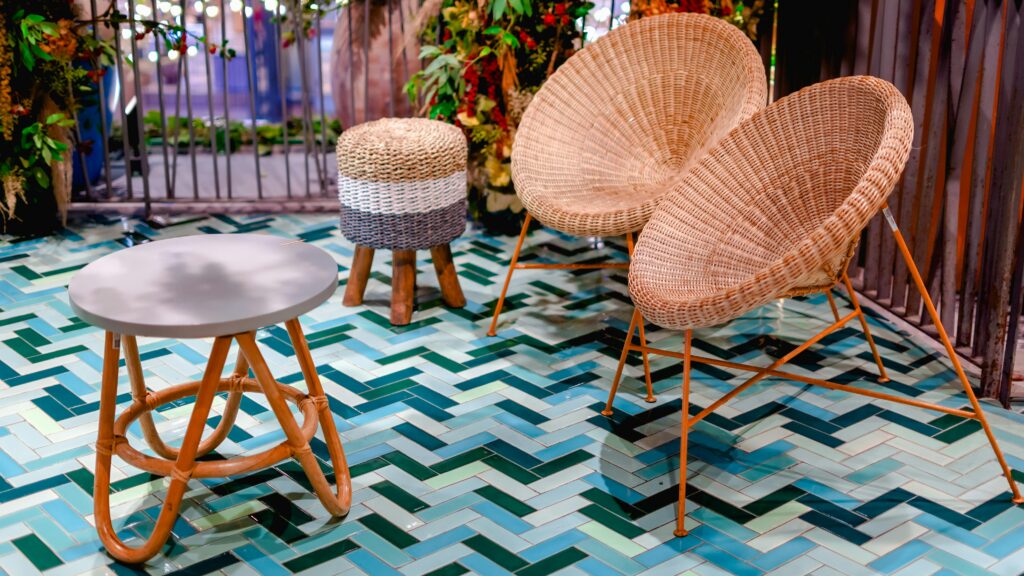
Rattan and wicker furniture have made a strong comeback, embracing their eco-friendly, natural aesthetic. These materials add texture and warmth to any room, offering both style and durability. From intricately woven armchairs to chic storage baskets, rattan and wicker pieces evoke a laid-back, bohemian vibe that pairs perfectly with contemporary decor. According to Better Homes & Gardens, designers are embracing these materials for their versatility and ability to complement a wide range of color schemes, from earthy neutrals to vibrant hues.
What makes rattan and wicker even more appealing is their light, airy quality, making them perfect for both small and large spaces. They provide a sense of openness and can transform even the most minimalistic of rooms into cozy, inviting spaces. Whether used as furniture or decorative accents, rattan and wicker continue to shine as one of the most enduring elements of ’70s style in today’s interiors.
2. Bold, Graphic Patterns

The 1970s were known for bold graphic patterns that brought a sense of energy and excitement to home décor. Floral prints, geometric designs, and psychedelic patterns were common in everything from wallpaper and rugs to throw pillows and curtains. Today, these striking patterns are being reintroduced with modern twists, often through abstract designs or oversized motifs. Many homeowners are opting for statement walls or accent pieces that feature vivid, eye-catching patterns to infuse their spaces with a touch of retro flair.
Graphic patterns are also being incorporated into modern textiles, such as area rugs and bedding, allowing for a more subtle nod to the 70s while still maintaining a contemporary aesthetic. By blending these bold designs with minimalist or neutral furniture, the patterns become the focal point of the room, adding a vibrant contrast to the overall décor. The resurgence of these graphic patterns is part of a broader trend of embracing maximalist design, where boldness and individuality take center stage in the home. As noted by Elle Decor, graphic patterns are experiencing a renaissance in today’s homes, blending past and present effortlessly.
3. Retro Color Palettes
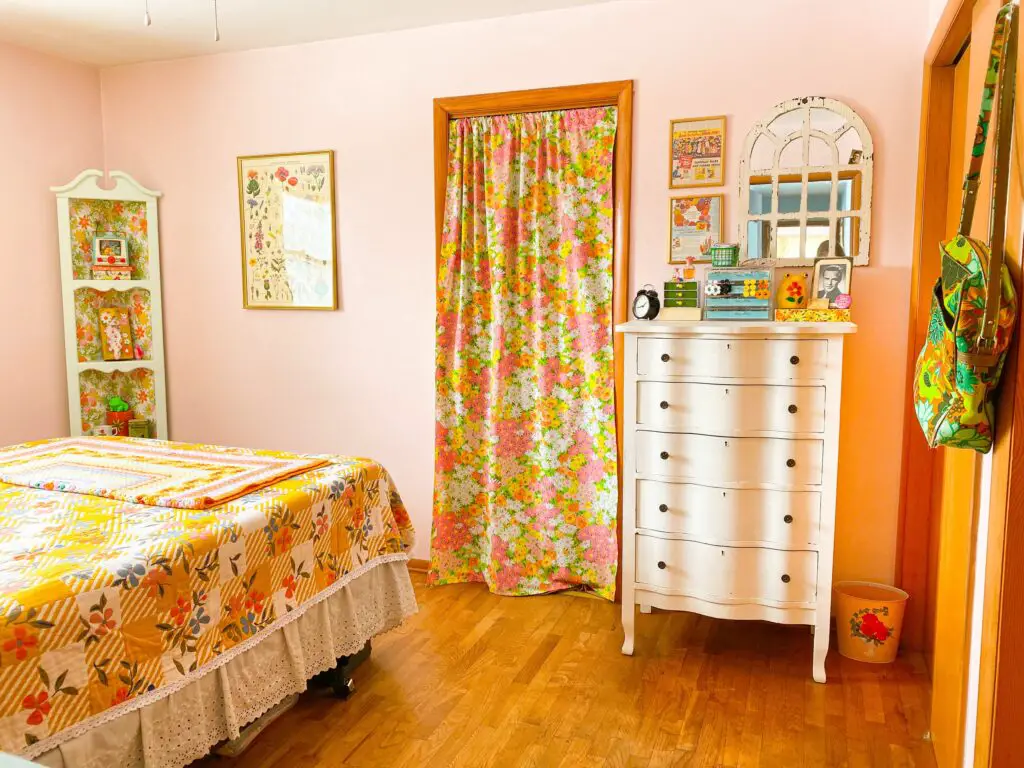
One of the most distinct features of 1970s interiors was the use of bright, unconventional color palettes. Think bold oranges, yellows, greens, and blues, often in combinations that were vibrant and playful. These colors were often used in kitchen appliances, upholstery, and even wall paint, creating an atmosphere that was both energetic and optimistic. Today, these retro color schemes are making a comeback, with many homeowners opting for statement walls, colorful furniture, or vibrant accessories to revive the 70s spirit in their homes.
However, modern versions of these color palettes tend to be used more selectively than in the 70s, often focusing on accent colors or specific pieces rather than overwhelming entire rooms. The pairing of bold colors with more neutral or muted tones creates a balance that keeps the space feeling fresh and modern. This trend highlights how interior design can embrace nostalgia while remaining relevant to contemporary tastes. According to House Beautiful, bold color palettes from the 70s are being mixed with more subdued hues to create balanced and stylish interiors.
4. Organic Shapes and Forms
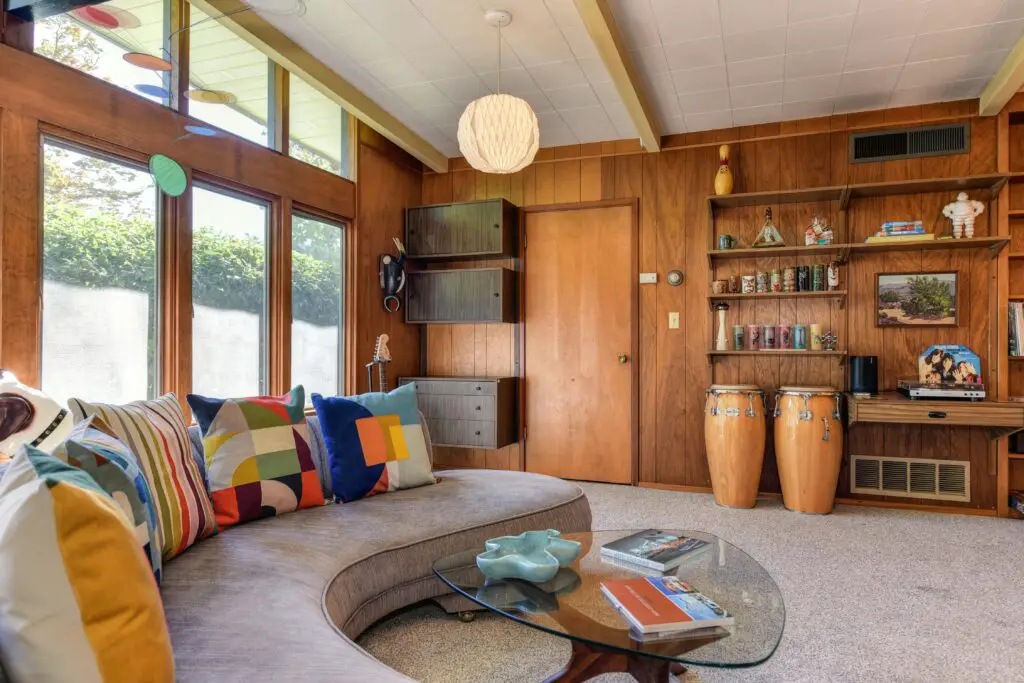
The 1970s saw the rise of organic and fluid shapes in furniture and décor, a departure from the more angular, rigid designs of earlier decades. Soft curves, rounded edges, and asymmetrical designs were incorporated into everything from chairs and tables to lighting fixtures and accessories. Today, this trend is being revived in the form of curvaceous sofas, sculptural furniture, and wavy or circular décor elements. These designs add a sense of flow and natural beauty to spaces, making them feel more relaxed and inviting.
Incorporating organic shapes into modern interiors can create a sense of visual harmony and warmth. Whether it’s a rounded coffee table or a flowing, curved chair, these pieces introduce a tactile quality that contrasts with the more minimalist, angular furniture often seen in modern spaces. As stated by Architectural Digest, curvy and organic shapes are becoming increasingly popular as part of the broader trend toward comfort and livability in home design.
5. Macramé

Macramé, once a staple of ’70s decor, has made a major resurgence in recent years. This intricate art form, which involves knotting threads into decorative patterns, adds a personal, handcrafted touch to any room. Popular in wall hangings, plant holders, and even curtains, macramé infuses spaces with a sense of texture and warmth. Its organic, bohemian appeal makes it a perfect fit for contemporary interiors seeking a vintage flair.
Incorporating macramé into a room also gives it a rustic, earthy charm. Whether as part of a minimalist scheme or a more eclectic space, macramé brings depth and dimension with its tactile, woven nature. Designers are finding creative ways to use this craft in modern homes, transforming it from a retro relic into a must-have element for cozy, inviting interiors.
6. Shag Carpeting
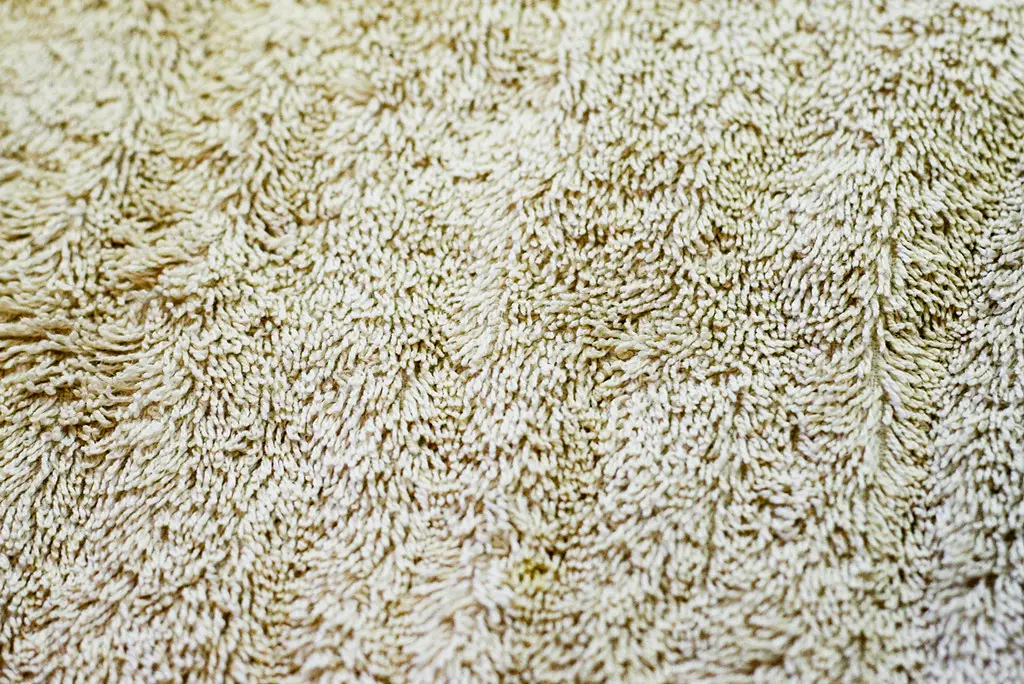
Shag carpeting was one of the defining elements of 1970s interiors, offering a luxurious and tactile experience that added warmth and texture to rooms. In the 70s, shag rugs were everywhere, from living rooms to bedrooms, creating cozy and inviting spaces. Today, shag carpeting is making a comeback in modern homes, with homeowners embracing its plush texture and vintage appeal. The key is to balance the softness of shag with more modern elements, creating a mix of comfort and style.
The shag trend is now being incorporated into area rugs rather than wall-to-wall carpeting, making it easier to add a touch of 70s flair without overwhelming the room. These rugs often feature bold colors and patterns, contributing to the retro aesthetic while complementing more contemporary furniture. With its tactile appeal, shag carpeting is a playful and nostalgic addition to today’s homes.
7. Lava Lamps
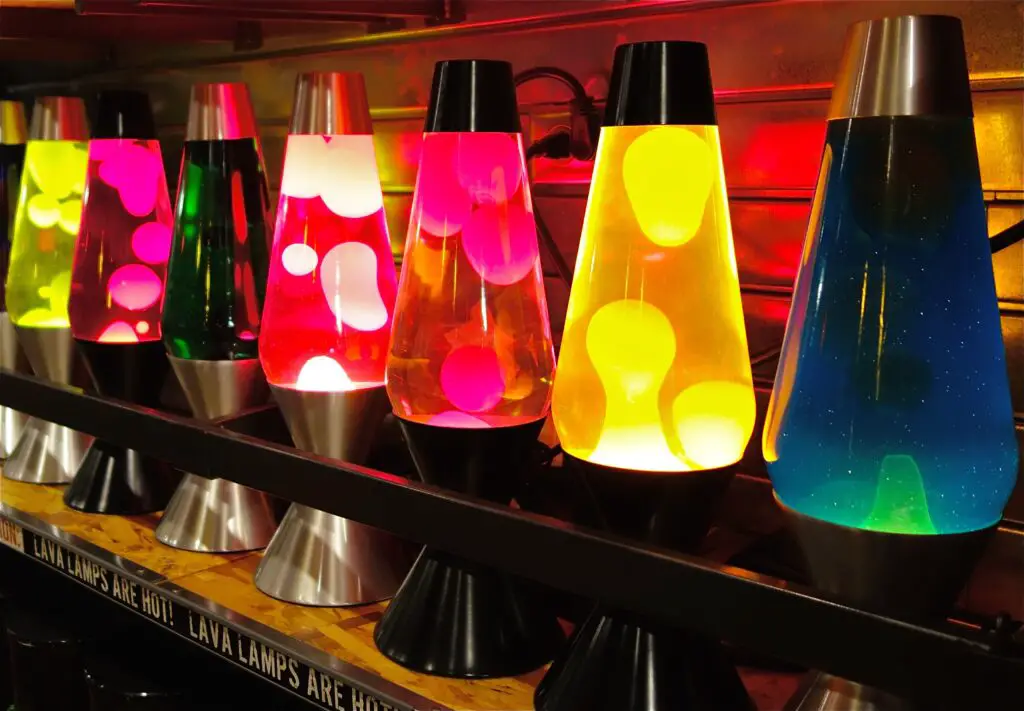
Lava lamps, one of the most iconic products of the 1960s and 70s, were all about groovy vibes and psychedelic color. These funky lamps were a popular addition to living rooms, bedrooms, and even dorm rooms, serving as both functional lighting and visual entertainment. Today, lava lamps are making a comeback, with updated versions available in sleek, modern designs that still retain the classic, hypnotic movement of the original.
Modern lava lamps are being reimagined with LED lights and more vibrant colors, fitting seamlessly into today’s homes. These lamps serve as a quirky and nostalgic piece of décor, adding a fun and whimsical element to any room. Whether placed on a side table or used as a statement light fixture, lava lamps bring a touch of retro charm to modern interiors.
8. Tropical Plants

Tropical plants are a staple of ’70s-inspired decor, bringing the lush, vibrant energy of nature indoors. From towering palms to cascading vines, these plants make a striking impact in any room. Their large, glossy leaves and varied textures add a sense of freshness and vitality that elevates the atmosphere, creating a sense of calm and relaxation. Whether in decorative pots or hanging baskets, tropical plants are versatile enough to complement both minimalist and boho-inspired spaces.
Beyond their visual appeal, tropical plants also contribute to a healthy indoor environment by improving air quality. Designers are incorporating them into spaces to create a natural, calming atmosphere, and their easy-to-care-for nature makes them a great choice for those looking to add greenery without too much upkeep. With their bold foliage and easy integration into various design schemes, tropical plants continue to be a must-have decor element that brings the best of nature into the home.
9. Pendant Lighting

Pendant lighting became a popular design element in the 1960s and only got bigger in the 70s, with bold, often oversized light fixtures becoming a statement piece in kitchens, dining rooms, and living spaces. Today, pendant lighting is experiencing a resurgence, with many homeowners opting for large, eye-catching designs that offer both function and style. These lights are available in a variety of materials, including glass, metal, and even fabric, allowing for customization to suit any interior.
Pendant lighting is also being used in more creative ways, such as grouping multiple pendants together or mixing different styles for a more eclectic look. This type of lighting allows homeowners to add a retro touch while maintaining a modern aesthetic, making it an ideal choice for contemporary spaces.
10. Bean Bag Chairs
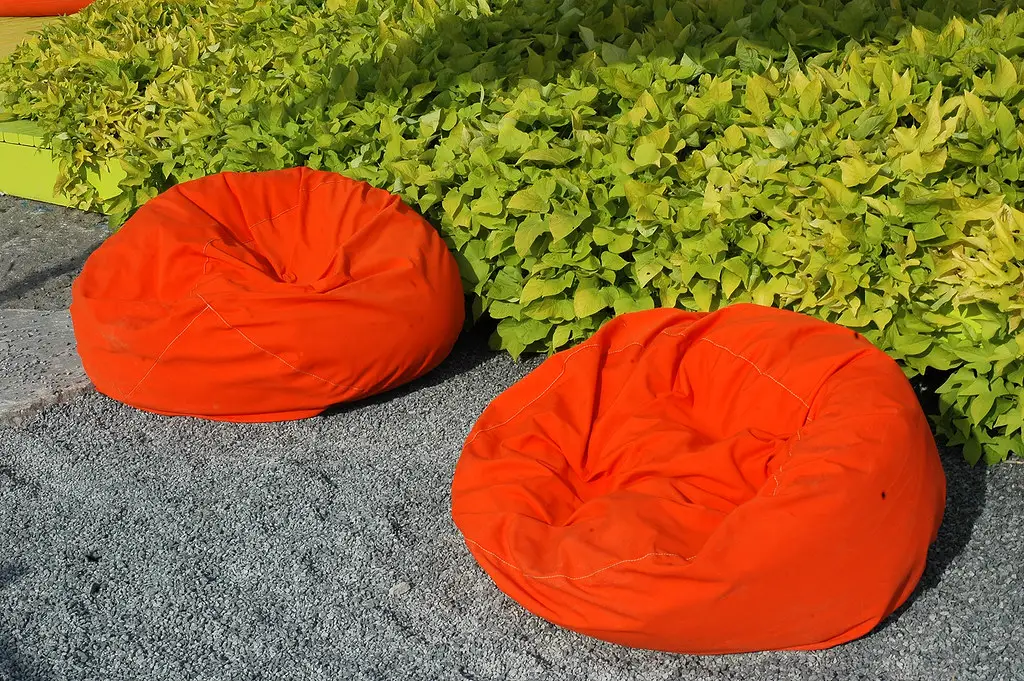
Bean bag chairs, which were popular in the 1970s as comfortable, casual seating options, are making a return in today’s homes. These cozy, slouchy chairs are often seen in living rooms, bedrooms, and even home offices, offering a laid-back and informal seating option. Modern versions of bean bag chairs feature updated materials, such as faux leather and memory foam, making them both more durable and comfortable.
Bean bag chairs are also being used in playrooms and children’s spaces, providing a fun and flexible seating option that’s perfect for lounging or reading. With their relaxed vibe and soft, supportive design, bean bag chairs offer a nostalgic yet practical addition to contemporary interiors.
11. Vinyl Records and Turntables
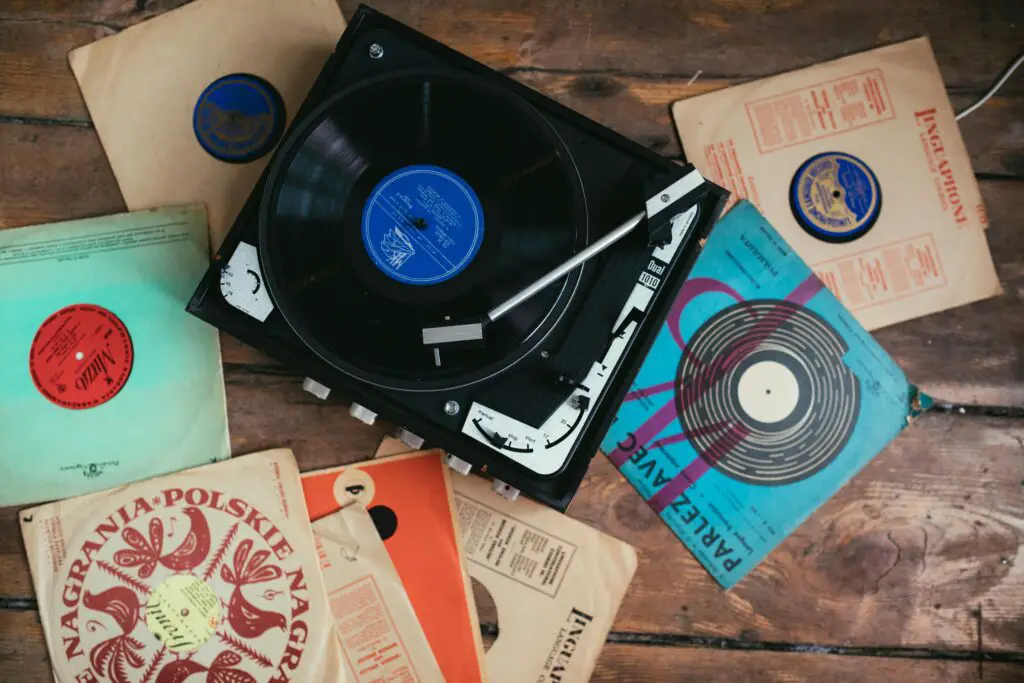
The 1970s was the golden era for vinyl records, and today, many homeowners are embracing this nostalgic trend by incorporating record players and vinyl collections into their interiors. Turntables are being used not just for their functional purpose, but also as design elements that add a vintage touch to modern spaces. Vinyl records are often displayed in creative ways, such as framed on walls or organized in stylish storage units, making them both a musical and aesthetic centerpiece.
In addition to the visual appeal, vinyl records and turntables offer a unique, analog listening experience that digital formats can’t replicate. As more people seek to create warm, inviting atmospheres in their homes, vinyl records have become a symbol of retro style and appreciation for quality sound.
12. Atomic Age Motifs
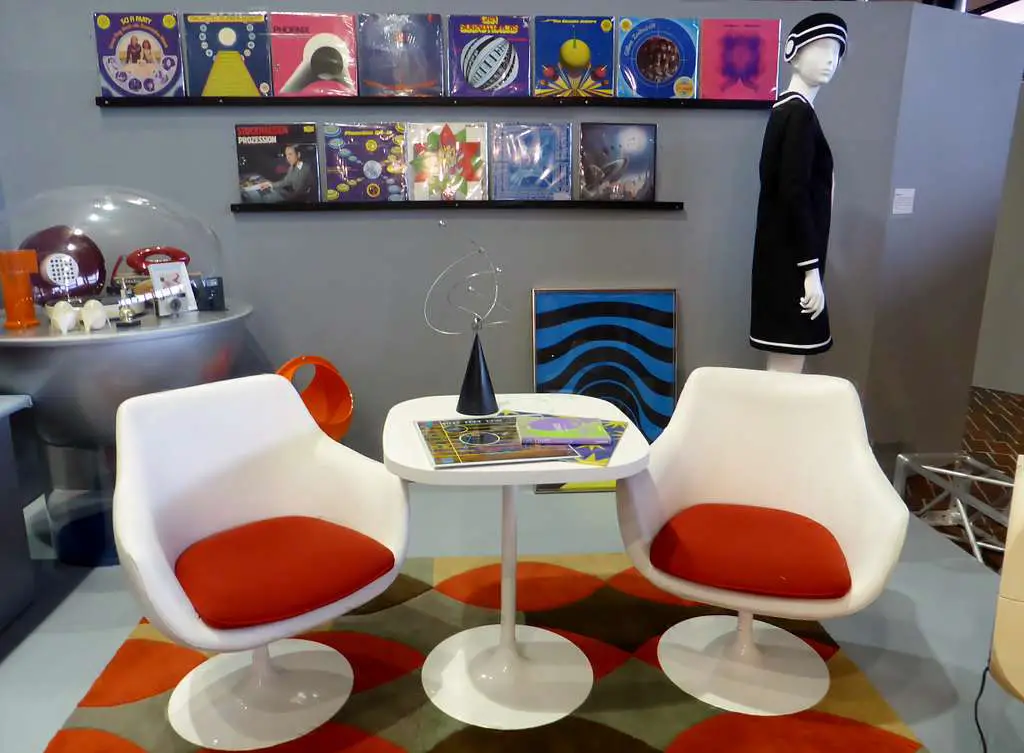
The atomic age, with its futuristic designs inspired by the space race and atomic energy, was a hallmark of the 1970s. These motifs often included abstract representations of atoms, stars, and other scientific imagery, and were incorporated into everything from furniture to wallpaper. Today, atomic age designs are making a comeback in the form of wallpaper, textiles, and decorative accessories, offering a whimsical yet modern take on 1970s style.
These designs often feature geometric shapes and bold, graphic lines that add a playful and retro touch to any room. By combining atomic age motifs with contemporary furniture and décor, homeowners can create a unique blend of futuristic nostalgia that feels both fresh and familiar.
13. Retro Kitchen Appliances
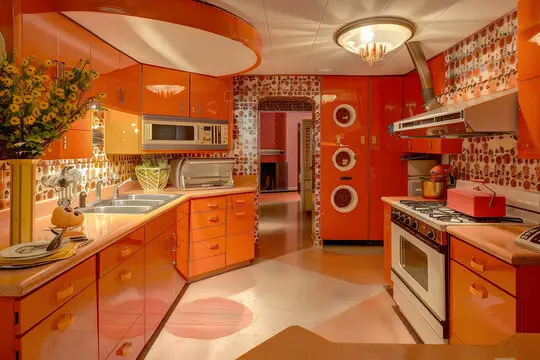
The 1970s saw a rise in colorful and funky kitchen appliances, from pastel-colored refrigerators to vibrant orange blenders. Today, vintage-inspired kitchen appliances are making a comeback, with modern versions available in a range of fun colors and retro designs. These appliances offer a stylish nod to the past while incorporating today’s energy-efficient technologies.
From retro toasters to bright stand mixers, these appliances add a pop of color and personality to the kitchen. They blend function with style, offering a vintage look while delivering the performance that today’s homeowners expect.
14. Velvet Upholstery
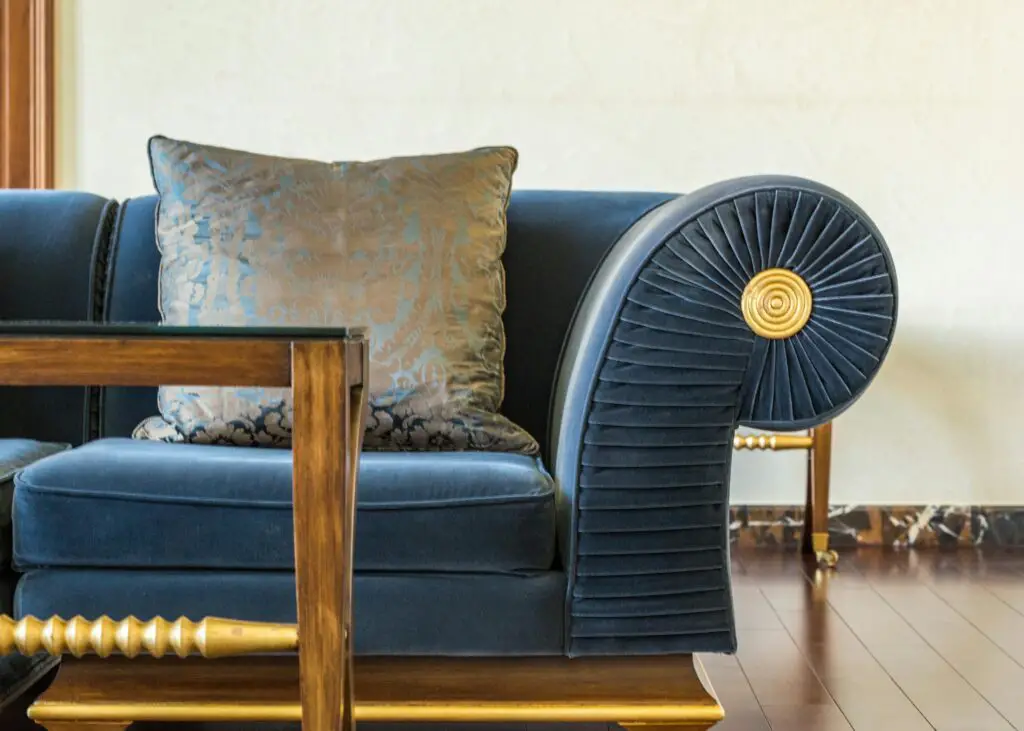
Velvet upholstery offers a rich, indulgent texture that instantly adds luxury to any piece of furniture. With its soft, plush feel and subtle sheen, velvet was a hallmark of ’70s interior design and is now seeing a revival in both traditional and modern homes. Sofas, armchairs, and ottomans upholstered in velvet bring a sophisticated and tactile quality to a room, elevating the overall aesthetic.
The deep, jewel-toned hues associated with velvet—think emerald greens, rich blues, and deep rusts—bring an opulent touch to contemporary spaces. Designers are embracing velvet not only for its visual appeal but also for its durability and comfort. Whether used in bold statement pieces or as part of more understated furnishings, velvet continues to capture the essence of ’70s style while seamlessly fitting into modern design trends.
